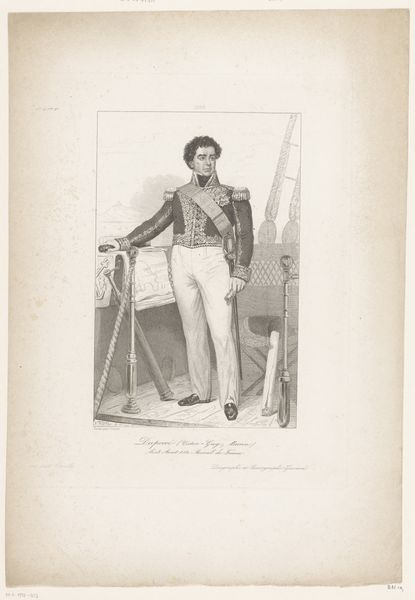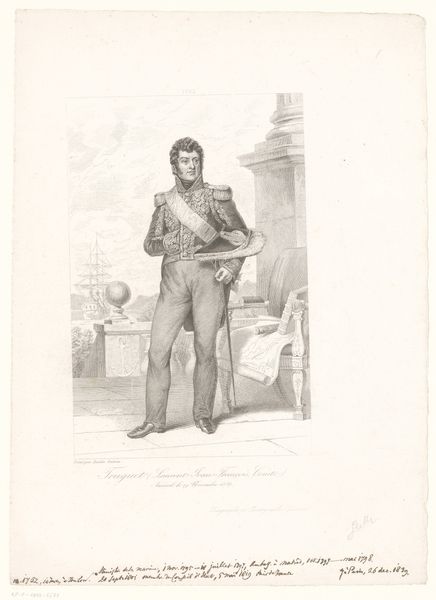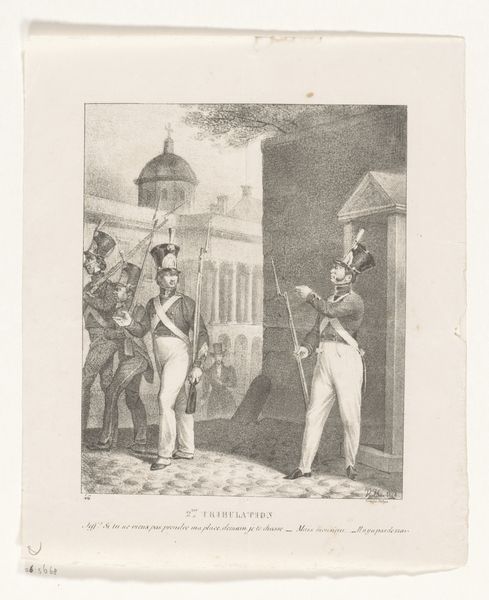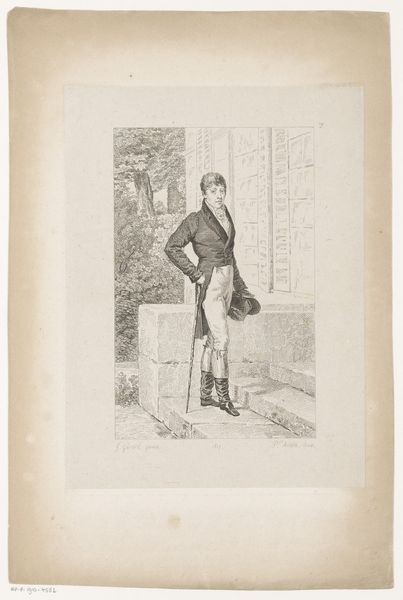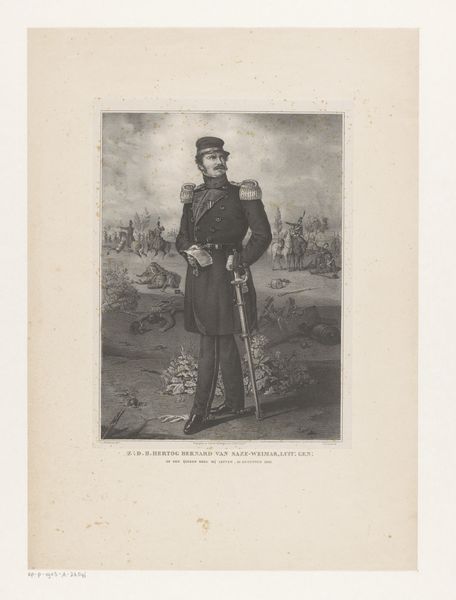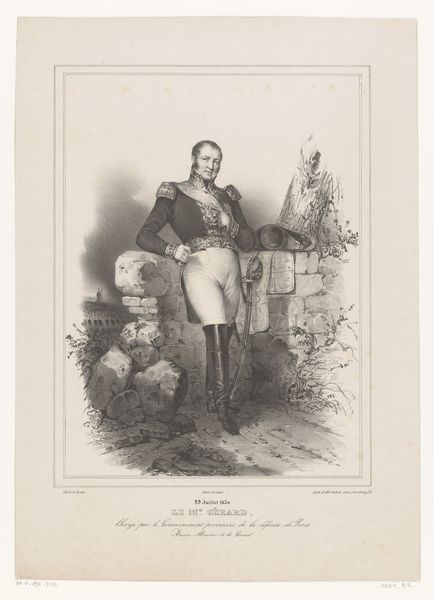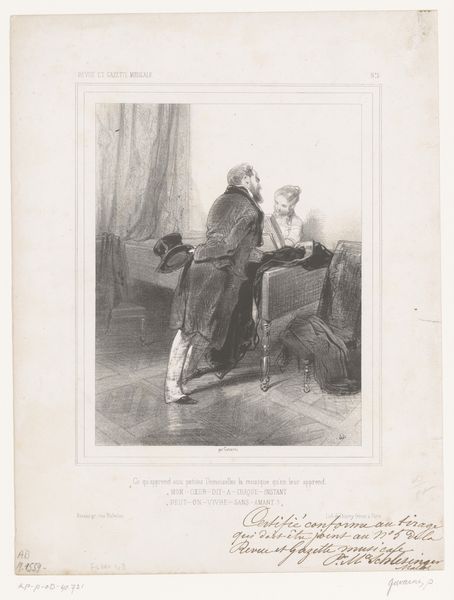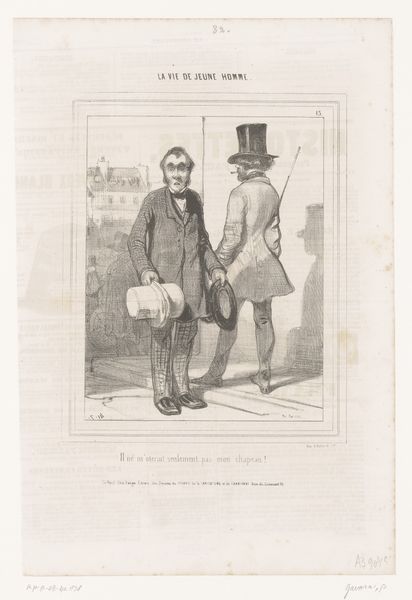
print, engraving
#
portrait
# print
#
old engraving style
#
figuration
#
personal sketchbook
#
classicism
#
romanticism
#
line
#
history-painting
#
academic-art
#
engraving
#
realism
Dimensions: height 269 mm, width 187 mm
Copyright: Rijks Museum: Open Domain
Alphonse François made this lithograph of Sylvain Charles Valée sometime in the mid-19th century. It depicts a high-ranking military man next to a cannon. This image speaks to the consolidation of power during the Bourbon Restoration in France, when there was renewed emphasis on military strength. Lithographs like this one had a public role to play. They were not fine art for private consumption. Instead, the popular medium was used to idealize public figures and circulate the symbols of state power. The trappings of military might create meaning through visual codes: the cannon, the cannonballs, the neatly stacked bags, and Valée’s military garb all underscore the might of the French army. Valée’s relaxed posture and confident gaze are devices meant to project an air of calm authority. Art historians rely on sources from the period, such as newspapers, political pamphlets, and military records, to fully understand the social function of images like this one. Ultimately, it’s only through understanding that context that we can truly grasp the art’s significance.
Comments
No comments
Be the first to comment and join the conversation on the ultimate creative platform.
